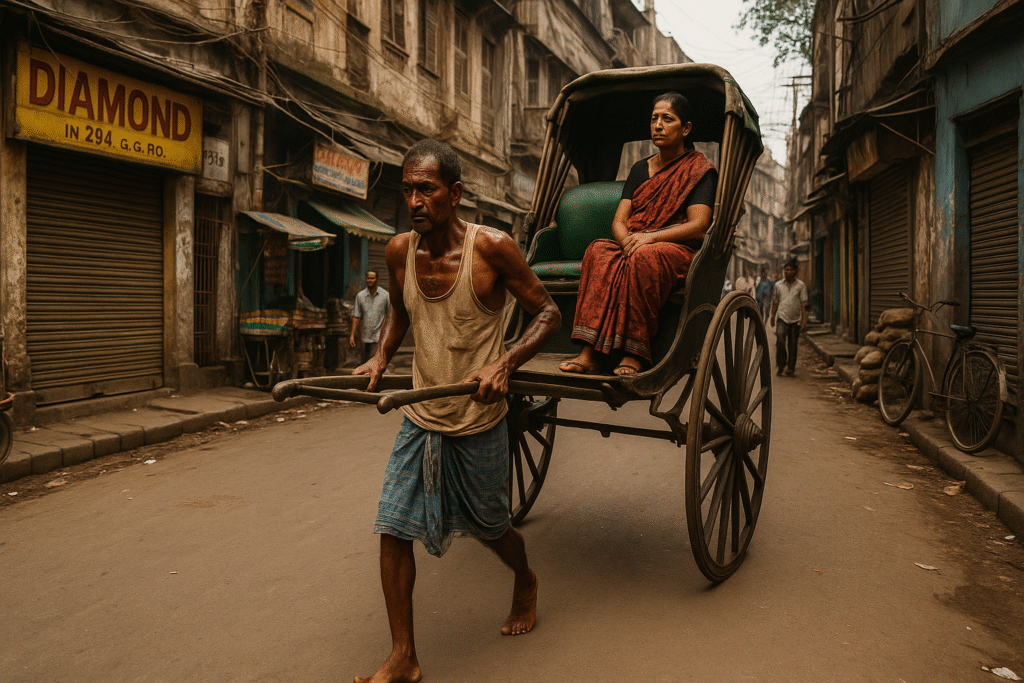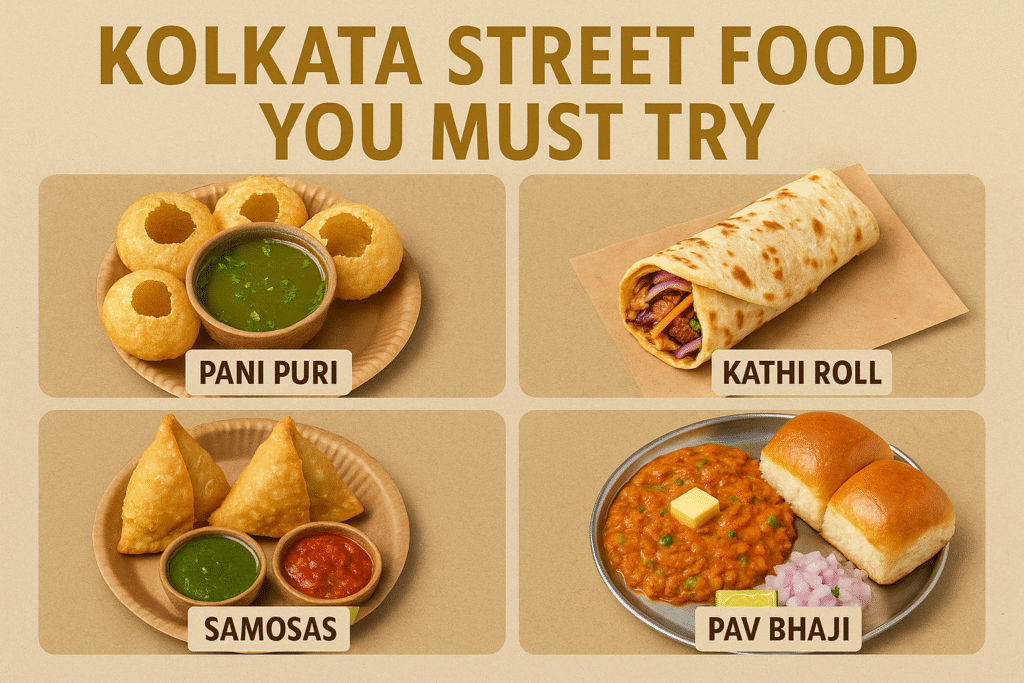🚲 Day in the Life of a Kolkata Rickshaw Puller – A Story of Strength & Survival (2025)
Step into the shoes of a hand-pulled rickshaw wallah in Kolkata. This day in the life of a Kolkata rickshaw puller reveals the grit behind the wheels. From TheIndiaTourism.in.
🧭 Introduction: The Human Engine of Old Kolkata
Among the yellow taxis and buzzing autos, Kolkata still holds onto one relic of its colonial past—the hand-pulled rickshaw. Though fading, it continues to serve elderly passengers, school children, and temple-goers, especially through the narrow alleys of North Kolkata, Bhowanipore, and Kalighat.
This is a heartfelt account of a day in the life of a Kolkata rickshaw puller, Raghunath Mistry, age 58, originally from Murshidabad, who’s been pulling his wooden-wheeled rickshaw through the city’s rain, heat, and crowds for over 30 years.
🌅 4:30 AM – The Day Begins in Silence
Before the city wakes, Raghunath rises at a roadside shelter near Kalighat. He washes at a public tap, folds his blanket, and prepares for the day with a cup of chai and a silent prayer to Ma Kali.
“I start before sunrise. My first ride is often for temple goers or newspaper men.”
✅ Morning earnings depend on catching temple-bound passengers early
🚶 6:00 AM to 11:00 AM – Hauling Lives with Bare Feet
With callused feet and a towel around his neck, Raghunath begins his shift:
-
Picks up elderly passengers headed to Kalighat or doctors in Lansdowne
-
Takes schoolchildren from slums to local Bengali medium schools
-
Navigates lanes too narrow for autos or Ubers
He earns ₹30–₹50 per ride, covering 5–10 km by foot before noon.
“I don’t rush. I pull like I’m carrying a life, not a load.”
🫓 11:30 AM – The First Break
At a roadside stall, he eats a humble lunch—rice, lentils, and potato curry—served by a local woman who offers discounted meals to rickshaw pullers.
“She’s like a mother to us. I pay ₹20. Sometimes I eat on credit.”
☀️ 12:00 PM to 3:00 PM – The Slow, Sweaty Hours
This is the lowest earning window, and most pullers rest. But Raghunath doesn’t go home—he naps inside the rickshaw, parked under a banyan tree near Hazra Crossing.
✅ Rain or shine, he never abandons his rickshaw—it’s his only asset.
🚨 3:00 PM to 7:00 PM – Second Wind, Second Shift
As the city returns from work, his business resumes:
-
Picks up tired commuters from Rashbehari Avenue
-
Helps mothers return from grocery trips
-
Escorts children back home from tuition classes
“Evenings are heavy, but that’s when I make up for what the morning missed.”
🌙 8:00 PM – The Last Ride & Night Rituals
Raghunath takes his final passenger to their door, returns to Kalighat, and washes his feet at the same tap he used in the morning.
Dinner is often a dry roti and a banana.
“Sometimes I dream of a small stall where I’d sell chai. But for now, I pull.”
📸 Life Lessons from the Hand-Pulled Rickshaw
| Value | Reflected Through Raghunath’s Day |
|---|---|
| Dignity in labor | Walks barefoot, but holds his head high |
| Resilience | Works 14+ hours even at 58 |
| Community reliance | Lives on trust and mutual support |
| Silent spirituality | Prays before work, thanks the road after |
🔗 Suggestions
❓FAQs: Day in the Life of a Kolkata Rickshaw Puller
Are hand-pulled rickshaws still legal in Kolkata?
Yes, but only in select areas, mainly South Kolkata. The government has phased them out in many zones, but a few hundred remain as heritage transport.
Do tourists use them?
Some do—especially in heritage walks or temple tours, but it’s advised to be respectful, not exploitative.
How can we support them?
-
Tip well if you ride
-
Buy meals or water during extreme weather
-
Or simply listen to their story
🌼 Conclusion: Kolkata’s Spirit Lives in Its Rickshaw Wheels
To truly understand Kolkata, you must walk beside the rickshaw pullers who carry the city on their shoulders without complaint. Raghunath’s story is one of quiet strength, forgotten lanes, and unbreakable dignity.
Let TheIndiaTourism.in guide you through the human stories behind Bengal’s historic streets—because the soul of travel is always in its people.


